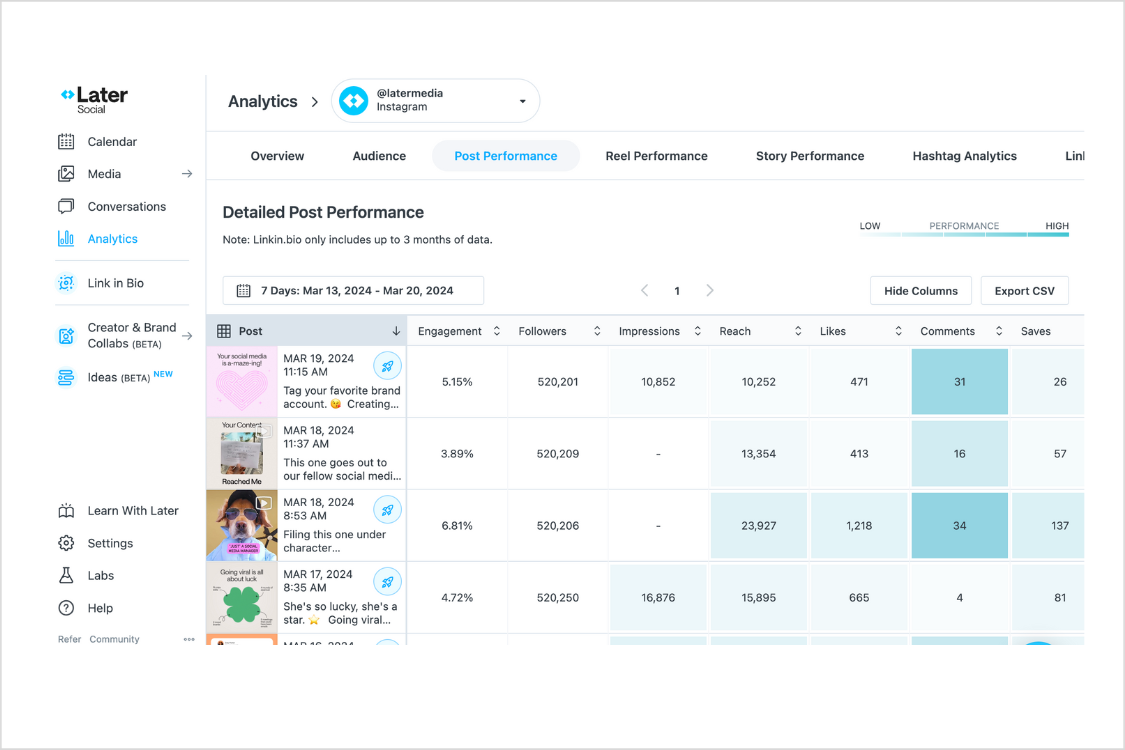Wondering how to create realistic social media goals for your brand? And more importantly, how to track them?
You're in the right place.
We’re sharing a step-by-step guide to setting SMART social media goals, measuring results, and reporting on your performance in 2024.
And for even more help, sign up to our new free course and learn everything you need to know about goal-setting, choosing the right social platforms for your business, and more.
Table of Contents
Join over 1 million marketers to get social news, trends, and tips right to your inbox!
Email AddressHow to Set Social Media Goals in 2025: A Step-by-step Guide
Consider Your Marketing Objectives
Review Your Existing Performance
Identify Key Metrics
Set Realistic Goals
Measure Your Results
Report on Performance
Step #1: Consider Your Overall Marketing Objectives
When it comes down to it, your social media content should be an extension of your marketing and business efforts.
Are you looking to generate more leads? Drive sales? Build brand awareness?
With a clear idea of your overall marketing goals, you can make informed decisions on your social media strategy, and what to track and measure your performance against.
Ask yourself "why" each social media platform is important for your brand:
Why are you posting to Instagram?
Why should you show up on TikTok?
Why are you starting a YouTube channel?
Why do you need a Pinterest strategy?
Knowing why you’re showing up on these channels, along with how they will support your business goals is key.
Step #2: Review Your Existing Performance
As someone famous probably once said, “The only way forward is back.”
This is exactly where a social media audit comes in handy. We know it’s not the most exciting task, but it’s a necessary step to creating goals.
Think of this as spring cleaning — only instead of dusting ceiling fans, you’re polishing up your social media content.
Once your audit is complete, take a hard look at your findings. What can you continue doing? What should you stop or pivot?
This will be a helpful guide to plan out your new SMART goals (more on that, soon).
To run an effective social media audit, bookmark this blog post: How to Audit Your Instagram Account (+ Free Checklist)
Step #3: Identify Key Metrics
Key metrics, sometimes referred to as key performance indicators (KPIs), are the measurements you’ll choose to focus on and analyze.
Based on your goals, your key metrics will help you gauge how your content is performing — and whether you're on track.
For example, if brand awareness is a goal, you'll want to look at metrics like reach or views.
There are a number of social media metrics you can choose from, but here's a high-level list of what Later's social team measures on different channels:
Sessions
Audience Growth
Sign Ups
YouTube Views
Engagement Rate
If you’re unsure which key metrics you should keep an eye on, check out: The Top 10 Instagram Metrics to Track.
Step #4: Set Realistic and SMART Goals
Now that you know your business objectives, completed a social media audit, and identified your key metrics, it’s time to start goal-setting.
We recommend setting SMART social media goals:
Specific: Include specifics to help you track the success of your content.
Measurable: The goal has to be measured in some way. This is where your key metrics come into play.
Achievable: Is this goal in scope? Your goals should be challenging, but still within reach.
Relevant: Is this goal working towards achieving your larger business objectives?
Time-sensitive: What is the timeline for this goal?
For example, here's how to apply the SMART framework to make a goal more effective:
Let's say your goal is to, grow on YouTube.
Specific
To make your goal as specific as possible, you can say “Reach 100K total YouTube channel views by end of year.”
Measurable
How will you measure this goal? In this case, the key metric you will measure is views.
Achievable
Ask yourself: is this goal achievable? Look at your current numbers (and resources) to determine if this YouTube goal is a major stretch or attainable.
Relevant
Let’s imagine one of your overall business objectives is to create more video content. If so, the chosen goal is relevant.
Time-sensitive
For this example, it’s time sensitive because there’s a set deadline of “by end of year.”
For more help creating and defining your SMART goals, sign up for our free social strategy course.
Step #5: Measure Your Results
While measuring results will look different depending on your goals, there are still ways to streamline the overall process.
Most social media platforms provide in-app analytics, and while those are great, a third-party tool like Later can help make the process much easier.
Later’s Instagram Analytics gives you a visual overview of how your content is performing — all in one dashboard.
The tool lets you track up to 12 months worth of content, so you can see exactly what's performed best — and filter by key metrics, such as likes, reach, comments, clicks, and more:

Later’s Instagram Analytics tool also segments by post performance, Reels performance, and Stories performance, so you can see exactly how each channel is driving unique value for your brand.
Start tracking your insights and post performance with Later's Instagram Analytics tools. Create an account today.
Step #6: Report on Performance
Reporting on your performance is a key factor to knowing if you’re achieving your goals.
“We like to track how we're marching towards our goals on a weekly and monthly basis,” explains Christine Colling, Later’s Social Media Manager.
While the weekly report is a high-level pulse-check, the monthly report goes into much more detail.
“For our monthly reporting, we do a deep dive. It helps us adjust things that aren’t working, and double down on the things that are.”
In your report, you can include your key metric numbers, month-over-month or year-over-year comparisons, and whether you're on track to achieve your end goal.
Think of your monthly social media report as a highlight reel that sums up your wins, losses, and opportunities.
So there you have it — setting social media goals doesn’t have to be daunting, especially when you follow these six steps.
And remember: goal setting is a marathon, not a race.
Ready to kick-start your monthly reporting? Download our free social media reporting template to help keep you on track.




